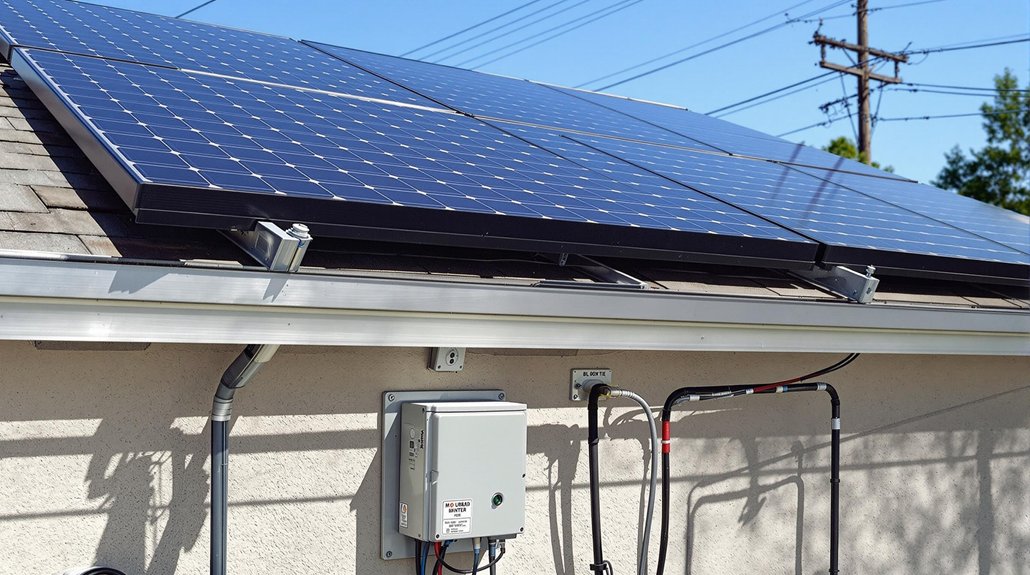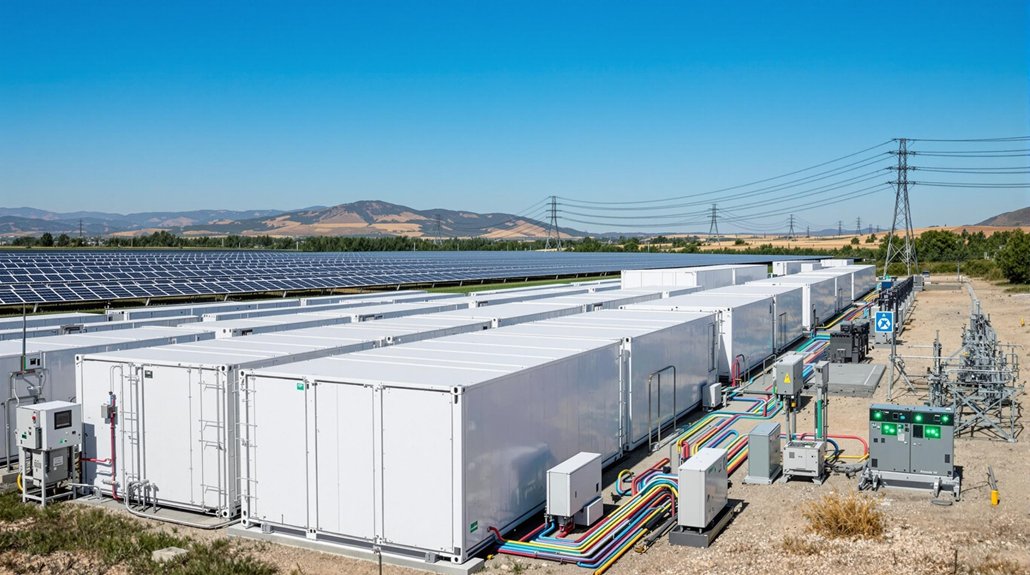Connecting solar panels to the power grid requires several steps. Homeowners must first apply for interconnection with their utility company and obtain necessary permits. They’ll need proper equipment including a grid-tie inverter and disconnect switch. The utility installs a bidirectional meter to track energy flow. Safety features like anti-islanding protection are essential. Financial considerations include net metering policies that vary by location. The complete process guarantees a safe, compliant and potentially cost-effective solar installation.

Connecting solar panels to the power grid involves several key steps and requirements that homeowners should understand before installation begins. The process starts with an application to the local utility company for interconnection. This formal request allows the utility to review how the solar system will interact with their grid.
After approval, homeowners must obtain permits from their local government to guarantee the system meets safety and building codes.
Local permitting ensures your solar installation meets essential safety standards and building regulations before connecting to the grid.
The solar system requires specific equipment for grid connection. A grid-tie inverter converts the direct current (DC) electricity from panels into alternating current (AC) that matches the grid’s voltage and frequency. A disconnect switch is also needed so the system can be safely shut off during maintenance or emergencies.
The utility will install a bidirectional meter that tracks both energy used from the grid and excess solar power sent back. Homeowners should review their utility contract carefully before finalizing the interconnection to understand all terms and responsibilities.
System design plays an essential role in successful grid connection. The solar array and inverter must be properly sized to match household energy needs and comply with utility requirements. Panels should be placed where they’ll receive maximum sunlight throughout the day. Deciding between series or parallel connections for your solar panel wiring will significantly impact system voltage and performance.
The entire system must integrate safely with the home’s existing electrical wiring. Integrating energy storage solutions can further optimize your system by storing excess power for use during peak demand periods.
Safety features are built into grid-connected solar systems. Anti-islanding protection prevents the system from sending power to the grid during outages, which could endanger utility workers. The system automatically shuts down when it detects grid power loss.
Clear labels identify all solar equipment for safety personnel.
Net metering policies vary between states and utilities. These programs give homeowners credit for excess electricity their systems produce. Some utilities offer full retail value for this power, while others provide wholesale rates.
System size limits for net metering eligibility range from 10 kilowatts to 2 megawatts depending on location.
Costs include utility interconnection fees, which typically range from $50 to $300. However, the Federal Investment Tax Credit and various state incentives help offset installation expenses.
Most grid-connected systems pay for themselves through electricity savings over time.
Frequently Asked Questions
How Long Does Grid Connection Approval Typically Take?
Grid connection approval typically takes 2-6 weeks in most cases, though the full interconnection process averages 4-8 weeks.
Simpler residential systems in solar-friendly areas might be approved in just 1-2 weeks.
However, areas with backlogs or complex requirements can extend the timeline to 3-6 months.
Large commercial projects may take 6-12 months.
Local utility policies, system size, and application completeness all affect timing.
Do I Need Special Insurance for Grid-Connected Solar Systems?
Grid-connected solar systems typically require special insurance.
Most utilities mandate additional liability coverage ranging from $100,000 to $300,000. Some utilities must be listed as “additional insured” on the policy.
Standard homeowner’s insurance usually covers the physical panels, but it’s the grid connection that necessitates extra coverage.
Insurance costs often increase by $10-$50 annually for residential systems, while commercial installations may need $1 million+ in coverage.
Can I Sell Excess Power During a Grid Outage?
Homeowners cannot sell excess solar power during grid outages.
Grid-tied solar systems automatically shut down during blackouts for safety reasons. This prevents electricity from flowing back into downed power lines, which could endanger utility workers.
Battery backup systems can store solar energy for home use during outages, but the selling mechanism through net metering only functions when the grid is operational and stable.
What’s the Average Payback Period for Grid-Tied Solar Installations?
Grid-tied solar systems typically pay for themselves in 5-10 years. The national average is 8.7 years, according to EnergySage.
Solar-friendly states often see faster payback periods of 6-8 years, while ideal conditions can reduce this to just 4 years.
Factors affecting payback include electricity rates, available incentives, system cost, energy usage patterns, and panel efficiency.
Most solar panel systems last 25+ years, providing savings long after breaking even.
Are There Tax Incentives for Connecting Solar to the Grid?
Grid-connected solar installations qualify for several tax incentives.
The federal solar Investment Tax Credit (ITC) offers 30% off installation costs through 2032. This credit applies to panels, labor, equipment, and storage devices.
Many states provide additional benefits like property tax exemptions, rebates, and net metering programs. Some areas offer Solar Renewable Energy Credits that homeowners can sell.
Local utilities sometimes provide special rates for solar customers.









